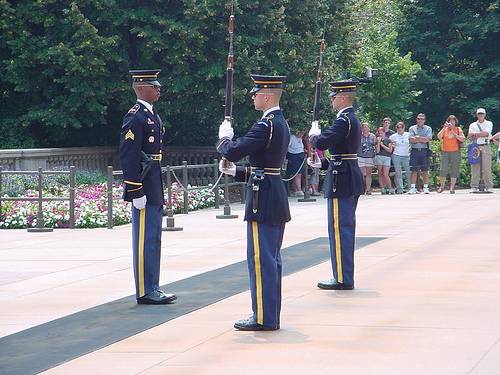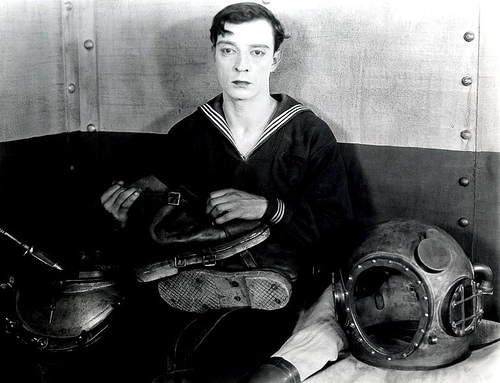
The average guard at the Tomb of the Unknowns cuts his hair, shaves twice, and spends eight hours preparing his uniform for each day’s work. (Thanks to MysticWolf for this one.)

The average guard at the Tomb of the Unknowns cuts his hair, shaves twice, and spends eight hours preparing his uniform for each day’s work. (Thanks to MysticWolf for this one.)
At its peak, during World War II, Fort Knox held enough pure gold to make 90 Statues of Liberty.
On the original Star Trek, many sets include pipes and tubes marked “GNDN”.
That’s an in-joke among the set designers — it stands for “Goes Nowhere, Does Nothing.”

“There’s just some people you don’t hit with a pie and that’s all there is to it.” — Buster Keaton
Ralph
n. the imp of mischief in a printing house
John Robert Conroy may have regretted bringing his bull terrier to France in World War I — the dog became the star of his unit. It won:
I’m not making any of that up. “Sergeant Stubby” fought in the trenches for a year and a half, warning of poison gas attacks, finding wounded soldiers, and listening for incoming shells. He met Woodrow Wilson and John Pershing, was wounded several times, and even learned to salute. His remains are on display at the Smithsonian.

An optical illusion.
The parallel lines are straight.
Led Zeppelin never won a Grammy.
In 1996, Göran Kropp rode a bicycle from his home in Sweden to Mount Everest, scaled it alone without oxygen tanks, and cycled back home.
“It is not the mountain we conquer,” wrote Edmund Hillary, “but ourselves.”

Pago Pago has always been known locally as Pango Pango.
When U.S. Navy officers first wrote to Washington from the island territory, they used a typewriter with a defective “N” key.